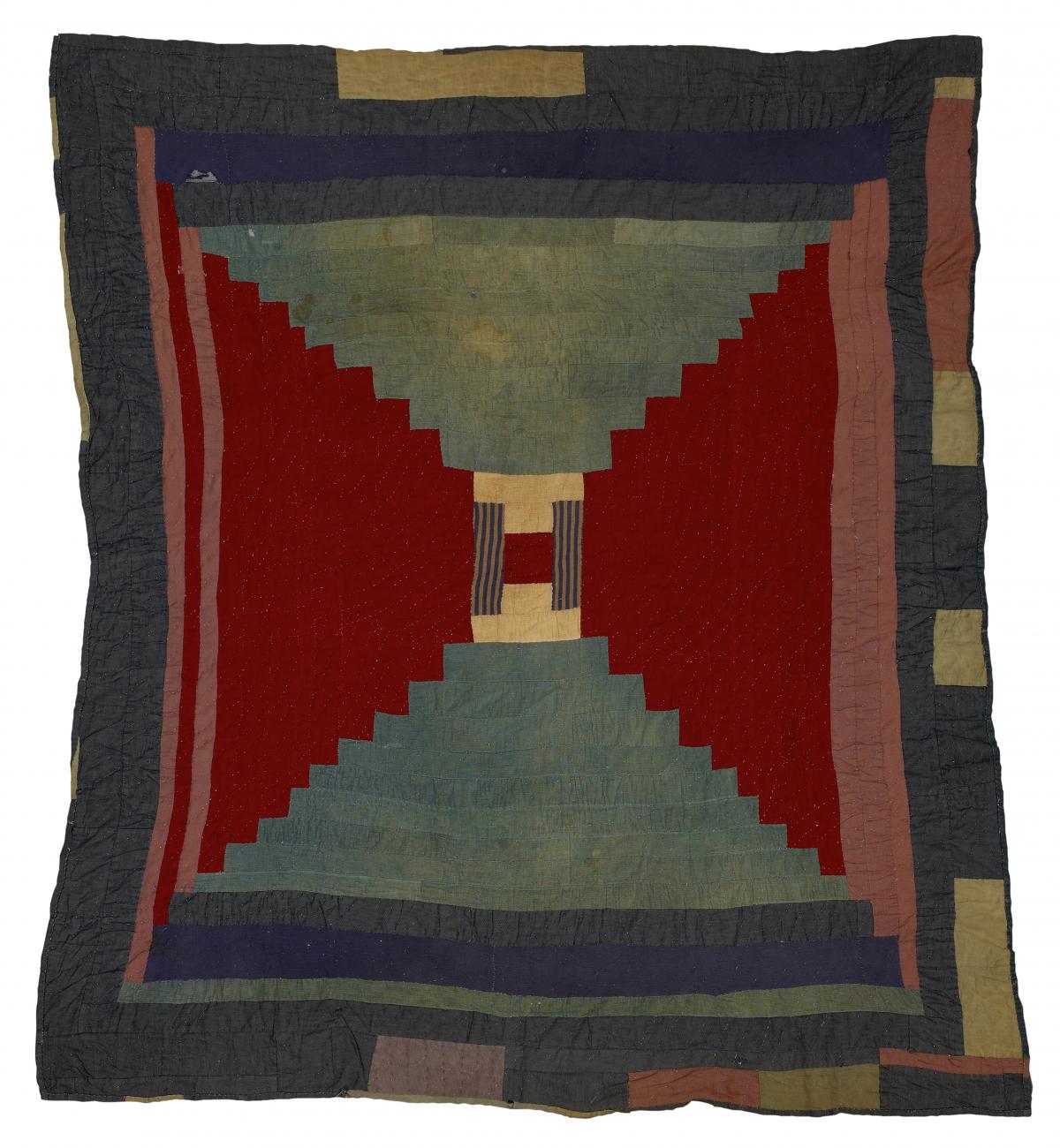"Bricklayer"
Lucy T. Pettway ( 1960s )

Situated on the banks of the Alabama River, Gee’s Bend resembles an inland island, surrounded as it is on three sides by water. This geographically isolated community has given rise to generations of African American quiltmakers possessed of peerless creative talents unparalleled in American art. It was within this rich artistic environment that Lucy T. Pettway distinguished herself as a master quiltmaker.
Always with a pencil and paper at hand, from a young age Lucy was a keen observer, sketching patterns and forms that would later serve as inspiration for her quilt designs. She studied her craft under the tutelage of her aunts, Martha Jane Pettway and Arie Pettway, both serious practitioners of the art form, and other members of the collaborative quilting community in Gee’s Bend. This alternative academy has nourished over a century of talented quiltmakers—with porches and kitchens acting in place of traditional studios and lecture halls—and is a testament to the ingenuity born of necessity and scarcity.
Although Pettway eschewed confining her work to one specific style, Two-sided quilt: blocks and strips and “Bricklayer” is a remarkable example of the locally named “Bricklayer” pattern, one of the preferred styles of the w omen of Gee’s Bend.
On the top side of the quilt, Pettway pieces her fabric to mesmerizing effect as she builds the Bricklayer pattern out from the central block, aligning horizontal lines of faded blue denim with vertical red- and rose-colored strips. While her color palette was diverse, she was particularly drawn to red and pink hues. The internal push and pull—a visual call and response—seduces the eye with its perspectival play.
The bottom side of the quilt further demonstrates the improvisational impulses of the artist, where blocks and strips break free from the architectural symmetry of Bricklayer and are here deconstructed into their component parts. The lone strip of pink—perhaps a nod to the dominant conversation on the top side—illustrates the visual patchwork poetry in Pettway’s work.
Mining the creative potential of discarded materials, Pettway’s use of disused and recycled cloth, characteristic of many Gee’s Bend quilts, is a bricolage of sorts, composed of clothing worn laboring in fields and factories and the remnants of ragged shirts and dresses. Mary Margaret Pettway, the artist’s daughter and a third-generation quiltmaker, recalled receiving parcels of clothing from relatives in New York, noting that the pink material came from a childhood dress. The blue strips were cut from the jeans of her cousin; the quilt itself covered his bed for many years.
Both as functional objects to warm the family during harsh winters in unheated homes and as masterful works of art, Lucy T. Pettway’s work acts as an extended family portrait, with ancestral echoes detected in shirt tails and faded knees. In Two-sided quilt: blocks and strips and “Bricklayer” and other quilts, Pettway has transformed these relics into some of the most compelling abstract art in any tradition.
Text by Raina Lampkins-Fielder, adapted from Seeing Differently: The Phillips Collects for a New Century (The Phillips Collection in association with Giles, 2021)